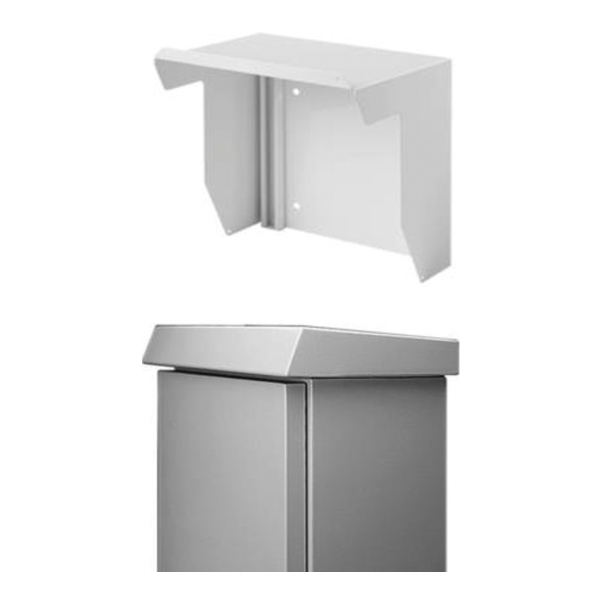Enclosure Solar Shields

Enclosure solar shields are specialized accessories designed to protect outdoor enclosures from the direct effects of solar radiation and solar heat. These shields are particularly crucial for enclosures that are exposed to direct sunlight, which can significantly increase the internal temperature due to solar heat gain. The primary function of a solar shield is to absorb and deflect solar heating effects, thereby helping to keep the enclosure cool and reduce the temperature rise inside.
Solar shields are usually installed on the top or over the surface of the enclosure, acting as a barrier between the sun's rays and the enclosure's material. By doing this, they effectively minimize the amount of solar heat that is absorbed by the enclosure. This is especially important for enclosures housing sensitive electrical or electronic equipment, where excessive heat can lead to malfunction or damage.
More Information about Enclosure Solar Shields
The material used for solar shields is typically developed to withstand harsh environmental conditions, including prolonged exposure to sun, rain, and snow. This durability ensures that the solar shield remains effective over time, providing consistent protection against solar heat. The design of the solar shield often includes a vented area to allow for air circulation, which further aids in dissipating heat and keeping the internal temperature of the enclosure at safe levels.
In addition to their primary role in heat protection, solar shields also serve to protect the enclosure from other environmental factors such as rain and snow. By covering the top and sometimes the sides of the enclosure, they provide an additional layer of protection against these elements.
Installation of solar shields is usually straightforward, and they are designed to be easily installed onto existing enclosures. The shields can be attached to the top, rear, or sides of the enclosure, depending on the design and the specific needs of the installation.
Enclosure Selection Basics
Electrical enclosures are cabinets that are designed to house electrical components. Their main function is to protect the components, as well as to protect the operators from electrical hazards. Enclosures are typically made of solid plastics, fiberglass and metal materials, such as carbon steel, stainless steel and aluminum.
One of the most important things to consider when selecting an electrical enclosure is the NEMA rating. NEMA stands for National Electrical Manufacturer Association. They have developed a rating system which determines the types of environments an electrical enclosure can be used in.
NEMA 1 and a NEMA 12 enclosures
Both of these enclosures are intended for indoor use only. They are both dust resistant. The NEMA 12 enclosure is rated for damp environments. The NEMA 1 is rated only for dry environments.
NEMA 4 and NEMA 4X enclosures
Both of these enclosures can be used indoors as well as outdoors. They are both dust resistant. They are also water resistant and corrosion resistant. NEMA 4X has an extra layer of corrosion resistance.
NEMA 7 enclosures
This is a more specific type of enclosure that is rated for use in hazardous environments. It is rated to contain an explosion within the enclosure and not cause any sort of external hazard.
Size
When selecting the size of an enclosure, it is important to consider the following: how much space will the electrical components occupy, how much space is needed around each component, is there enough room to run all of the wires and how much space is needed outside of the enclosure?
Temperature
When selecting an enclosure, it is important to consider both the ambient temperature and the temperature that is generated inside of the enclosure. When an enclosure is located outside in direct sunlight, that heat can be transferred inside the enclosure. Also, each component inside of the enclosure generates a certain amount of heat.

